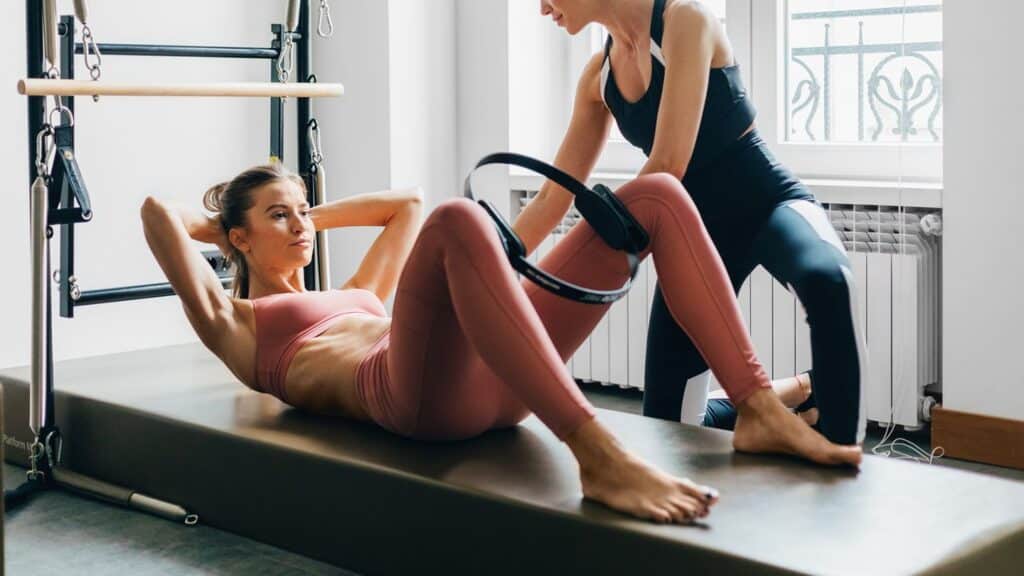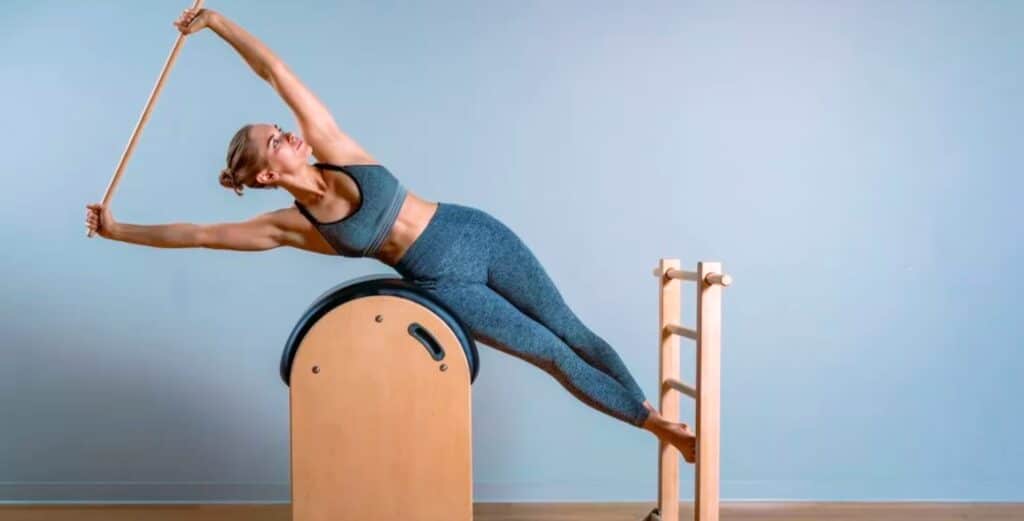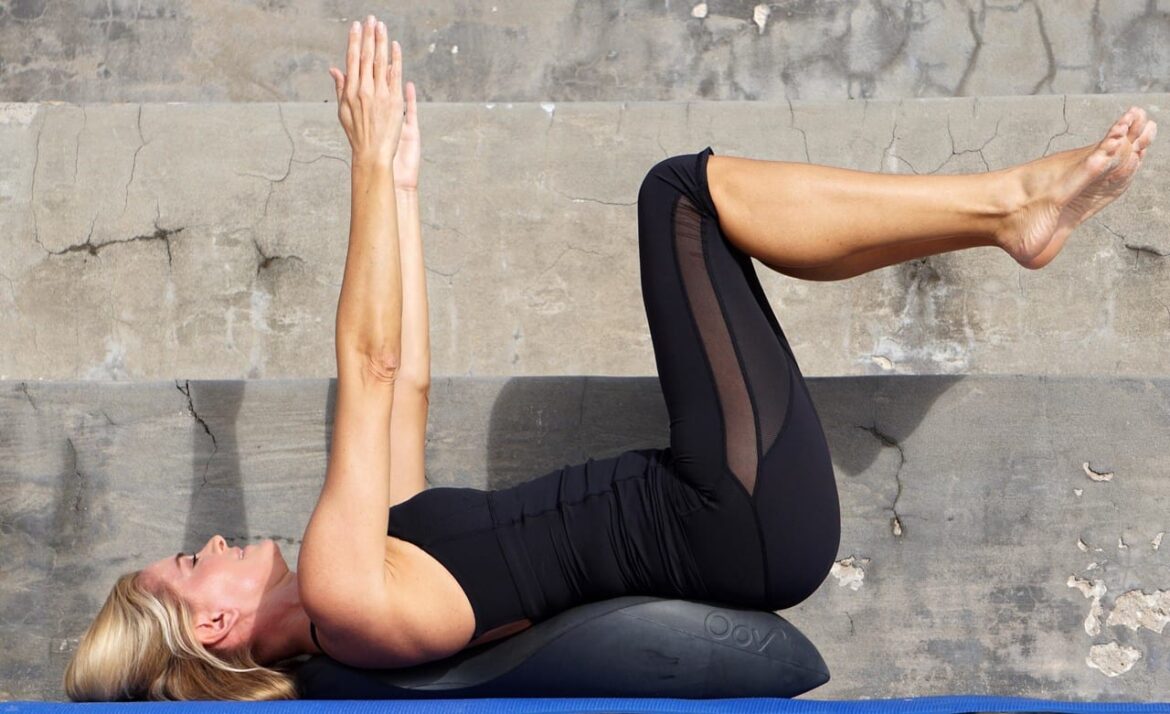Introduction
Is 20 Minutes Of Pilates A Day Enough: In our fast-paced world, finding the time for regular exercise can often be a challenge. For many, the idea of squeezing in a workout routine that lasts an hour or more can seem daunting and impractical. Pilates, a low-impact exercise method known for its focus on core strength, flexibility, and overall body conditioning, has gained popularity in recent years as a time-efficient fitness option. In this exploration, we will delve into the effectiveness of a 20-minute daily Pilates practice and whether it can truly deliver meaningful health and fitness benefits. Whether you’re a Pilates enthusiast seeking to optimize your routine or someone considering incorporating this practice into your daily life, join us as we uncover the potential advantages and limitations of this condensed approach to Pilates.
While 20 minutes may seem short, consistency can make a significant difference in your overall fitness. Daily practice allows you to reinforce proper form and alignment, which is crucial in Pilates to prevent injury and maximize results.
The intensity of your 20-minute Pilates session plays a significant role in its effectiveness. Focusing on challenging exercises and maintaining proper form can make a shorter session more impactful than a longer one with less effort.
Your fitness goals should guide the duration and intensity of your Pilates practice. If your objective is general fitness, stress relief, or improved posture, a 20-minute daily session may suffice. However, if you’re aiming for substantial weight loss or significant muscle gain, you may need to consider longer sessions or complementing Pilates with other forms of exercise. Pilates offers a wide range of exercises and modifications to target different muscle groups. A well-structured 20-minute routine that includes a variety of exercises can provide a full-body workout within a short timeframe.

Will 20 minutes of Pilates a day make a difference?
If you’re following the right workouts, absolutely! 20-minutes a day is plenty to get you in Pilates shape.
Benefits of a 20-Minute Daily Pilates Routine
Improved Core Strength:One of the most significant benefits of Pilates is its ability to strengthen the core muscles. Consistent practice can lead to better posture, reduced back pain, and enhanced stability in everyday activities.
Increased Flexibility:Pilates incorporates a variety of stretches and movements that improve flexibility. Over time, you may find that your range of motion increases, making it easier to perform daily tasks and other physical activities.
Enhanced Mind-Body Connection:Pilates emphasizes the importance of mental focus and concentration during exercises. This heightened mind-body connection can improve coordination and body awareness, helping you move more efficiently.
Stress Reduction:The slow, controlled movements and emphasis on breathing in Pilates can promote relaxation and reduce stress. A daily routine can be an excellent way to unwind and clear your mind.
Is 20 minutes of Pilates a good workout?
“Even 20 minutes a day can help because pilates activates muscles and wakes things up,” says Helen O’Leary, physiotherapist and director of Complete Pilates. “It also helps you build body awareness, and the best way to do this is little and often.
Advantages of a 20-Minute Pilates Workout
Efficiency: One of the primary benefits of a 20-minute Pilates workout is its efficiency. Pilates exercises are designed to engage multiple muscle groups simultaneously, making the most out of a short amount of time.
Core Strengthening: Even in a brief session, Pilates emphasizes core strength. Regular practice can lead to improved posture, reduced back pain, and increased stability in your daily life.
Flexibility: Pilates incorporates stretches and movements that enhance flexibility. Over time, you can expect improved range of motion, making everyday tasks easier.
Mind-Body Connection: Pilates encourages mindfulness and concentration during exercises. This increased awareness can enhance coordination and body control.
Low Impact: Pilates is gentle on the joints, making it suitable for people of various fitness levels and ages.
Can 20 minutes of Pilates help you lose weight?
20 minutes of Pilates workout for weight loss and toning is a great start, but it won’t be enough to help you lose weight quickly. To reach your weight loss goal, you should aim for at least 45 minutes to an hour of Pilates every day.
Calorie Burn and Weight Loss: Pilates is not known for its high calorie burn compared to more vigorous exercises. A 20-minute Pilates session may burn around 100-200 calories, depending on various factors such as your body weight, intensity of exercises, and individual metabolism. Weight loss occurs when you burn more calories than you consume, creating a calorie deficit. While Pilates can contribute to this deficit, it’s important to combine it with a balanced diet and possibly other forms of exercise for more substantial weight loss.
Muscle Building and Metabolism: Pilates engages various muscle groups, and as you progress, you’ll build lean muscle mass. Muscle burns more calories at rest compared to fat, potentially boosting your metabolism. An increased metabolism can assist in weight management and weight loss by helping you burn more calories throughout the day.
Appetite Control and Stress Reduction: Pilates, like other forms of exercise, can help in appetite control and reducing stress levels. Stress and emotional eating are common barriers to weight loss. Pilates, by promoting relaxation and releasing endorphins, can positively impact your relationship with food.
Complementing a Comprehensive Weight Loss Plan: While 20 minutes of Pilates may not be a standalone solution for significant weight loss, it can be a valuable component of a comprehensive weight loss plan. Combining Pilates with cardiovascular exercises and a healthy, calorie-controlled diet can lead to better results.
How many calories does 20 minutes of Pilates burn?
Additionally, the results showed that you would burn 4 calories per minute with a beginner Pilates workout, 6 calories per minute, and 7.5 calories per minute with intermediate and advanced Pilates workouts, respectively. That’s 240 to 450 calories burned every 60 minutes.
Factors Influencing Calorie Burn in Pilates
Body Weight: Heavier individuals tend to burn more calories during exercise as they require more energy to move their body.
Intensity: The more vigorous and challenging your Pilates session, the more calories you’ll burn. Incorporating props like resistance bands or weights can also increase intensity.
Fitness Level: Experienced Pilates practitioners may burn more calories because they can perform exercises with better form and precision, engaging the muscles more effectively.
Type of Pilates: There are various types of Pilates, including mat-based Pilates and equipment-based Pilates (using machines like the reformer). Equipment-based Pilates can provide a more intense workout, potentially leading to higher calorie burn.
Consistency: Regular practice can lead to improved muscle tone and increased metabolism, which may result in more calories burned over time.
Age: Metabolism tends to slow down with age, which can affect calorie expenditure during exercise. However, regular Pilates can help mitigate some of these age-related changes.
How quickly will I see results from Pilates?
In summary, you can expect to see results from your Pilates practice within a few weeks to a few months, depending on various factors.
Consistency is Key
When it comes to Pilates, as with any form of exercise, consistency is the key to seeing results. Your dedication and commitment to regular practice play a significant role in determining how quickly you’ll notice improvements. Typically, it is recommended to engage in Pilates sessions at least 2-3 times a week to witness noticeable changes. Over time, consistent practice will help build muscle strength, increase flexibility, and enhance your body awareness.
Initial Changes
While the speed of progress varies from person to person, most beginners tend to experience some initial changes within the first few weeks of regular Pilates practice. These early results can include improved posture, enhanced body awareness, and a sense of increased energy. These changes are often attributed to better alignment, engagement of core muscles, and improved breathing techniques that are fundamental to Pilates.
Building Strength
One of the primary benefits of Pilates is its ability to build strength, particularly in the core muscles. As you progress in your practice, you’ll likely notice increased muscle tone and strength in your abdominal, back, and pelvic floor muscles. These changes may become more apparent after a few months of consistent practice, but it can vary based on your starting fitness level and the intensity of your Pilates sessions.
Does Pilates give faster results?
While individual results may vary, most people can see noticeable body changes within just three weeks. However, those who do Pilates less often may take up to eight weeks to see noticeable results in their bodies. However, Pilates changes more than just the body.
The Role of Consistency
One of the most critical factors influencing the speed of results in any exercise program is consistency. Regardless of the exercise type, regular practice is essential for seeing meaningful progress. Pilates is no exception. To achieve noticeable results, individuals must commit to consistent practice, typically 2-3 times a week or more.
Factors Affecting the Speed of Results
Fitness Level: If you’re already relatively fit, you may notice improvements in your core strength and flexibility more quickly. However, beginners can still make substantial progress, but it may take a bit longer to build a strong foundation.
Intensity: The intensity of your Pilates sessions matters. More intense or advanced Pilates workouts may yield faster results in terms of muscle tone and strength. However, it’s essential to strike a balance between intensity and safety to avoid overexertion or injury.
Is Pilates enough to get fit?
While able to build some muscular strength and endurance, Pilates is not challenging enough to build muscle size or strength beyond a fundamental level. Similarly, if you want to increase cardiovascular endurance or capacity, Pilates will not be an effective training method.
Core Strength: Pilates places a strong emphasis on strengthening the core muscles, which include the abdominals, back, and pelvic floor. A strong core is essential for overall stability and can help alleviate back pain.
Flexibility: Regular Pilates practice can lead to improved flexibility and increased range of motion in the joints, making it easier to perform everyday activities and other forms of exercise.
Posture: Pilates encourages better posture by promoting awareness of body alignment and teaching the muscles to support the spine and pelvis.
Mental Well-Being: Pilates incorporates mindfulness and controlled breathing, which can reduce stress, enhance mental focus, and improve overall mental health.
Low Impact: Pilates is gentle on the joints, making it suitable for people of all ages and fitness levels. It is often used for rehabilitation purposes.
Should I do Pilates slow or fast?
By moving slow, you are ensuring that you’re alignment is correct. Thishis is one of the most important parts of your Pilates workout. Correct alignment doesn’t only ensure that your muscles are getting the best workout, but it also ensures that you don’t injure yourself.
Slow Pilates
Muscle Engagement and Control: Slower movements in Pilates allow for better muscle engagement and control. When you perform exercises slowly, you can focus on proper alignment, muscle activation, and breathing techniques. This helps in activating the targeted muscles effectively and with precision.
Mind-Body Connection: Slow movements encourage a stronger mind-body connection. It allows you to be more mindful of each movement, muscle engagement, and the overall form. This awareness can enhance the quality and effectiveness of your workout.
Improves Flexibility and Range of Motion: Slower movements give your muscles time to stretch and lengthen, which can improve flexibility and increase your range of motion over time. This is particularly beneficial for exercises that focus on enhancing flexibility.
Fast Pilates
Cardiovascular Benefits: Faster-paced Pilates movements can elevate your heart rate and provide cardiovascular benefits. While Pilates is not primarily a cardiovascular workout, incorporating faster movements can add an element of aerobic exercise to your routine.
Muscle Endurance: Faster repetitions and movements can help build muscle endurance. This is especially important for individuals looking to enhance their stamina and endurance in various activities.
Calorie Burn: Faster movements can increase calorie burn during the workout session. If weight management is a goal, incorporating faster-paced exercises can contribute to a higher calorie expenditure.

Conclusion
The question of whether 20 minutes of Pilates a day is enough has no one-size-fits-all answer. It depends on your fitness goals, the intensity and variety of your routine, and your personal circumstances. For those seeking general fitness maintenance, stress relief, improved posture, and a stronger core, a daily 20-minute Pilates practice can be a valuable addition to your routine. The key lies in consistency, mindful practice, and ensuring that those 20 minutes are well-utilized with a focus on quality movements.
However, if you have specific goals such as substantial weight loss or significant muscle gain, it may be necessary to supplement your Pilates routine with other forms of exercise or consider longer Pilates sessions.
Ultimately, the effectiveness of a 20-minute daily Pilates practice hinges on your commitment, dedication, and how well you tailor your routine to your individual needs. Remember that fitness is a journey, and the most important aspect is finding an exercise routine that you can maintain and enjoy over the long term. Consult with a fitness professional or Pilates instructor to create a balanced and effective plan that aligns with your goals and lifestyle.

